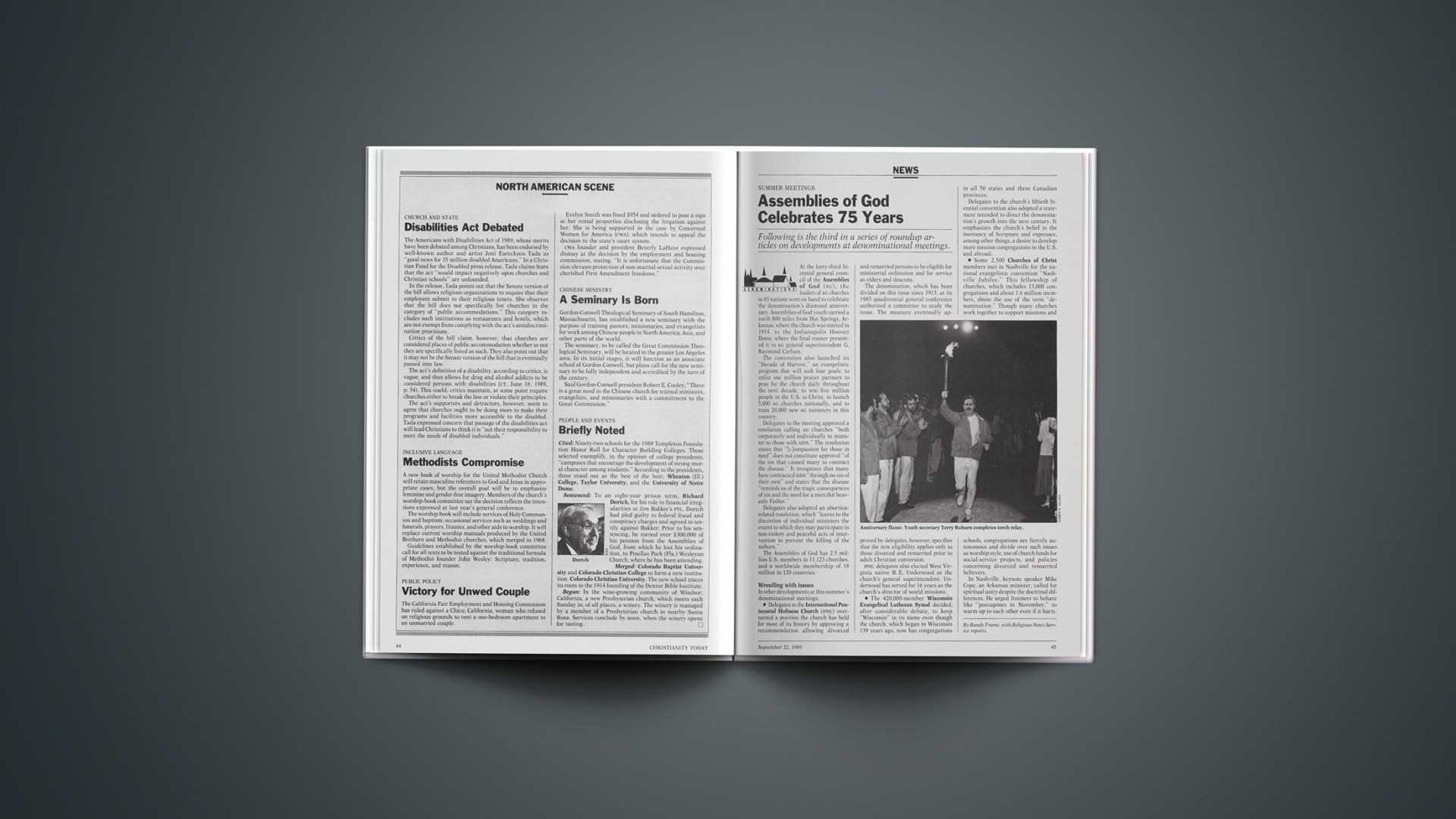Missionary Bruce Olson prayed often during his nine months of captivity in Colombia, but not for what most people would expect.
“My prayer was not ‘God, liberate me,’ ” he said. “My prayer was to be effective where God had me placed.”
Olson feels God answered his prayers by sustaining him through primitive jungle conditions, life-threatening illness, psychological pressure, and his mock execution until his release on July 19 (CT, Aug. 18, p. 46).
Olson, 47, who has worked for 28 years among the Indians of northeastern Colombia, described his experience in an interview with CHRISTIANITY TODAY conducted shortly after his return to the U.S. in August.
On October 24, 1988, Olson and several companions from the Motilone tribe were approaching a jungle cooperative by canoe when they were confronted by more than two dozen armed guerrillas of the Communist Union of the National Liberation Army (known as the ELN). According to Olson, the “base guerrillas,” the rank and file of the ELN, had been ordered by officers, or “responsibles,” to capture Olson. Until then he had coexisted in the area with the guerrillas, who looked favorably on the social services he helped develop. But their new orders accused him of being a CIA agent and helicopter pilot who had killed thousands.
The real reasons for his abduction, Olson said, were his success in working with Indians near the Venezuelan border, an area the ELN wanted to control, and his refusal to cooperate with the Communist organization.
Initially, Olson’s captors were antagonistic toward him. But as he was shuffled from base to base—12 of them before he was released—he consistently won the trust of the guerrillas, teaching them to read, studying the Bible with them, and introducing them to Christ. When his effects on a base camp’s regulars became known to the leaders he was quickly moved.
“I’d say about 60 percent of the 200 guerrillas I had Bible studies with came into a definite understanding of Jesus Christ and a Christian commitment,” he said. “A guerrilla is just as much a hostage as I was, because once they’re taken into the organization, they can’t leave it. They realize that death can be just one tree away, so they think often of death and the purpose of life.”
Olson generally fared well physically throughout captivity, but he became sick with an intestinal disorder that caused severe internal hemorrhaging. At one point, the guerrillas asked their superiors to allow Olson to be taken out of the jungle, but the request was denied. A doctor was brought in to care for Olson, and several times the guerrillas gave blood for transfusions, he said.
After eight months of captivity, Olson learned his status had been changed from political prisoner to prisoner of war. He was asked again to confess to the murder of thousands. When he refused, he was sentenced to be executed.
Olson was tied to a tree. Before him stood 15 guerrillas, many of whom he considered friends. Some he had led to Christ, but they would be killed if they did not carry out their orders. So with tears in their eyes, they fired, not knowing their guns were loaded with blanks, Olson said.
Soon after his “execution,” Olson was told he would be set free. A national leader of the ELN gave Olson the news. “We will never forget you,” the leader told Olson. “You are the first person in our camp that we have captured that has been a friend and understood us. We esteem you.” Then Olson was taken on a dizzying 12-day hike out of the jungle and released in a Venezuelan border town.
After his release, Olson learned that representatives of all the country’s Indian tribes had met and delivered an ultimatum to the guerrillas to free him. Public opinion throughout the country was also working heavily in his favor.
Olson believes the guerrillas made a mistake in capturing him, both in terms of their image, and in terms of his presence in their camps. “One leader in the national organization told the [Communist] papers that he was quite upset with me because in every camp I caused undercurrents. The undercurrents were that the guerrillas were becoming friends of mine, were studying the gospel, were learning how to read and write, and developing a conscience.”
Olson returned to the U.S. at the urging of his relatives in the United States after threats on his life continued in Colombia. The St. Paul native plans to return in November to Colombia, where he holds citizenship, and continue his work with the Motilone and other Indians.
“I see the future as very bright. As the Colombian papers point out, the Indians have for the first time defended the cause and the life of a white man,” Olson said.
By Ken Sidey.










